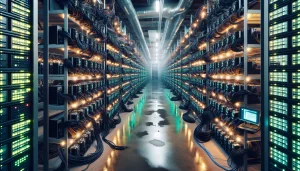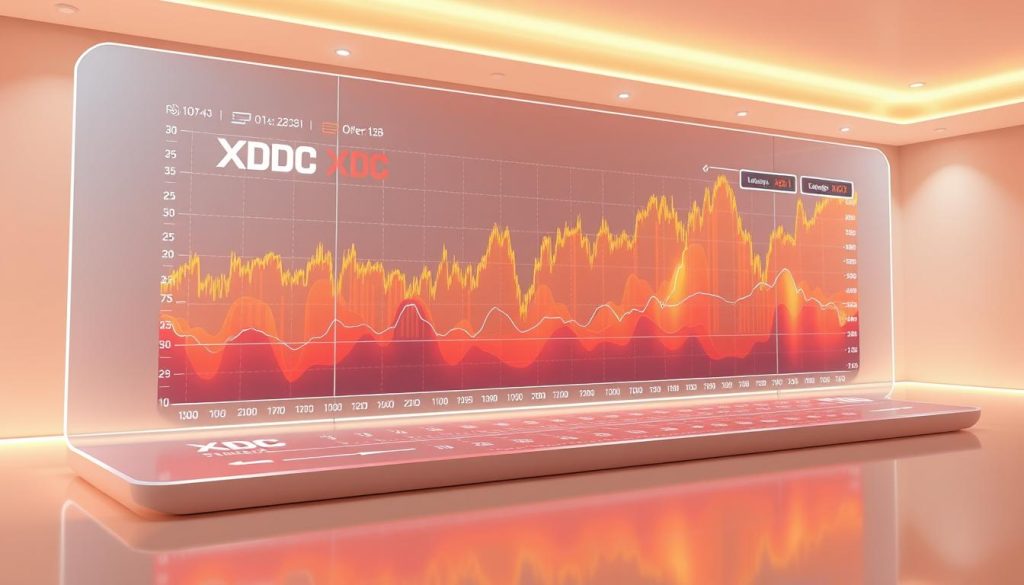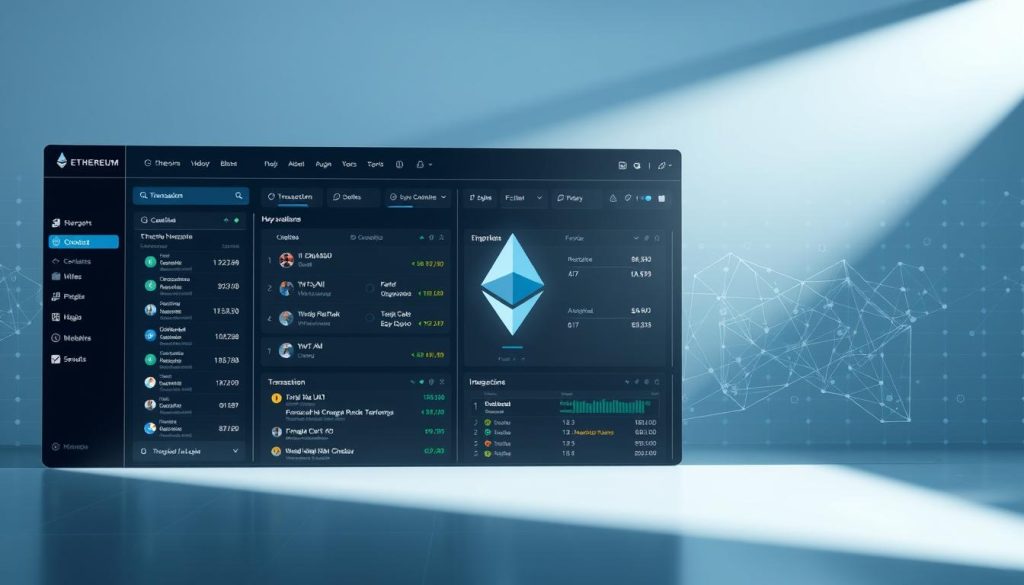Bitcoin mining might sound like some arcane digital process reserved for tech wizards with server farms, but it’s the backbone of the entire cryptocurrency ecosystem. Without miners, there would be no Bitcoin transactions, no network security, and no new coins entering circulation. If you’ve ever wondered what mining actually involves, or whether it’s something you could do yourself, you’re in the right place. The reality is more complex and fascinating than most people realize. Mining isn’t just about running specialized computers: it’s a competitive, capital-intensive operation that secures a decentralized financial network worth hundreds of billions of dollars. Understanding how it works gives you insight into Bitcoin’s fundamental value proposition and the economic forces shaping its future.
Key Takeaways
- Bitcoin mining is the process that creates new bitcoins, verifies transactions, and secures the entire blockchain network through competitive computational work.
- Miners use specialized ASIC hardware to solve complex cryptographic puzzles, with the first to succeed earning newly minted bitcoins plus transaction fees roughly every ten minutes.
- Profitability depends heavily on electricity costs—industrial operations target rates below $0.05 per kWh, making home-based Bitcoin mining unprofitable for most individuals.
- Mining pools allow participants to combine computing power and share rewards proportionally, providing steady income instead of the lottery-like odds of solo mining.
- Over 50% of Bitcoin mining operations now use renewable energy sources like hydroelectric, solar, and wind power, driven by the need for cheap electricity.
- The 2024 halving reduced block rewards to 3.125 BTC, increasing miners’ dependence on transaction fees and accelerating industry consolidation toward large-scale professional operations.
What Is Bitcoin Mining?

At its core, Bitcoin mining is the process by which new bitcoins are created and transactions are verified and added to the blockchain. Think of miners as both the auditors and record-keepers of the Bitcoin network, but with a twist, they compete against each other for the privilege of doing this work.
When you send Bitcoin to someone, that transaction doesn’t just instantly appear in the blockchain. It sits in a pool of unconfirmed transactions called the mempool. Miners select transactions from this pool, bundle them into a block, and then race to solve a complex mathematical puzzle. The first miner to solve the puzzle gets to add their block to the blockchain and receives a reward: newly minted bitcoins plus transaction fees from all the transactions in that block.
This process happens roughly every ten minutes, maintaining a consistent rhythm that’s been programmed into Bitcoin’s code since its creation. The reward started at 50 bitcoins per block back in 2009, but it halves approximately every four years in an event called the “halving.” As of 2024, miners receive 3.125 bitcoins per block, and this will continue to decrease until around the year 2140, when the last bitcoin will be mined.
What makes mining truly ingenious is that it’s not just about creating new currency. It’s the mechanism that keeps Bitcoin secure and decentralized. Without mining, there would be no way to prevent someone from spending the same bitcoin twice or rewriting transaction history. Miners provide the computational power that makes attacking the network prohibitively expensive.
How Bitcoin Mining Works
The mechanics of Bitcoin mining blend cryptography, game theory, and raw computational power in ways that still impress me years after first learning about it. Let me walk you through what actually happens when miners compete to add a new block.
The Role of Miners in the Bitcoin Network
Miners serve multiple critical functions simultaneously. First, they validate transactions, checking that senders actually have the bitcoins they’re trying to spend and that all the cryptographic signatures are correct. This prevents fraud and ensures the integrity of every transaction.
Second, they provide security through sheer computational work. The more miners participating in the network, the more expensive it becomes for any bad actor to accumulate enough computing power to attack it. You’d need to control more than 50% of the network’s total hash rate to potentially manipulate transactions, a feat that would cost billions of dollars with today’s mining difficulty.
Third, miners distribute new bitcoins into circulation according to a predictable schedule. There’s no central bank deciding monetary policy: the code dictates exactly when and how many new coins appear. This programmatic scarcity is fundamental to Bitcoin’s economic model.
What’s remarkable is that miners achieve all this without needing permission from anyone or trusting any central authority. They simply follow the protocol, and the system works. When one miner successfully adds a block, all other miners immediately verify it and begin working on the next block. This creates a self-reinforcing cycle of validation and security.
Proof of Work and Hash Functions
The mathematical puzzle miners solve relies on something called a cryptographic hash function, specifically, SHA-256 (Secure Hash Algorithm 256-bit). A hash function takes any input and produces a fixed-length output that appears random but is deterministic: the same input always produces the same output.
Here’s where it gets interesting. Miners take the transactions they want to include in a block, add some metadata including a reference to the previous block, and append a number called a nonce. They then hash this entire package. The goal is to find a hash that falls below a certain target value, essentially, a hash that starts with a specific number of zeros.
There’s no shortcut to finding this hash. You can’t work backwards from the desired result. The only way is to try different nonces repeatedly until you stumble upon one that produces a qualifying hash. This is called proof of work because you’re proving you expended computational resources by showing a valid solution that could only have been found through extensive trial and error.
The network automatically adjusts the difficulty of this puzzle every 2,016 blocks (roughly every two weeks) to maintain that ten-minute average block time. If miners are solving blocks too quickly because more computing power has joined the network, the difficulty increases. If miners drop off and blocks slow down, it decreases. This self-adjusting difficulty is what keeps Bitcoin’s issuance schedule on track even though massive fluctuations in mining participation over the years.
Essential Equipment for Bitcoin Mining
If you’re thinking about mining Bitcoin, your choice of equipment will determine whether you have any chance of profitability. The days of mining on a laptop are long gone, we’re talking about specialized hardware designed for one purpose only.
ASIC Miners vs. GPU Mining
ASIC stands for Application-Specific Integrated Circuit, and these machines represent the current standard for serious Bitcoin mining. An ASIC miner is built from the ground up to perform SHA-256 hashing and nothing else. This singular focus makes them extraordinarily efficient at mining Bitcoin compared to general-purpose hardware.
Modern ASIC miners like the Antminer S19 XP or the Whatsminer M50S can perform over 100 trillion hashes per second (terahashes). They’re loud, generate tremendous heat, and consume several kilowatts of electricity continuously. But for Bitcoin mining at scale, they’re the only realistic option.
GPU (Graphics Processing Unit) mining, which uses the same graphics cards gamers rely on, was popular in Bitcoin’s early years. GPUs are versatile and can mine various cryptocurrencies, making them flexible if you want to switch between different coins. But, for Bitcoin specifically, GPUs became obsolete around 2013 when ASICs entered the market. The hash rate difference is simply too vast, a single ASIC will outperform a large GPU rig while using less electricity.
You’ll occasionally see people mining other cryptocurrencies with GPUs, particularly those using algorithms designed to resist ASIC development. But if your goal is mining Bitcoin, you need ASICs. The initial investment runs from a few thousand dollars for older, less efficient models to over $10,000 for cutting-edge machines.
Beyond the miners themselves, you need robust infrastructure: reliable high-speed internet, adequate cooling systems, and most importantly, access to cheap electricity. The operational costs, particularly power consumption, will determine your success far more than the upfront hardware investment.
Mining Pools: Pros and Cons
Solo mining, where you run your own operation and keep all rewards if you successfully mine a block, sounds appealing. In practice, it’s become nearly impossible for individuals. With millions of miners competing globally, your chance of being the one to solve the next block is vanishingly small, even with high-end equipment.
This reality led to the creation of mining pools, where miners combine their computational power and share rewards proportionally. When the pool successfully mines a block, the reward gets distributed among participants based on how much hash power each contributed. This creates predictable, steady income instead of the lottery-like odds of solo mining.
The advantages are clear. You receive regular payouts rather than potentially waiting months or years to mine a single block on your own. Pools also handle much of the technical complexity, providing software and infrastructure that simplifies the mining process. For anyone operating at a small or medium scale, pools are the only practical approach.
But pools come with tradeoffs. Most charge fees ranging from 1% to 3% of your earnings. You’re trusting the pool operator to distribute rewards fairly and to keep their systems secure. There have been instances of pool operators disappearing with accumulated Bitcoin or being hacked.
There’s also a philosophical concern. Bitcoin was designed to be decentralized, but when a few large mining pools control the majority of hash power, it introduces centralization risks. If several major pools colluded, they could potentially manipulate the network. This hasn’t happened, and the incentives discourage it, but the theoretical vulnerability exists.
When choosing a pool, you’ll want to consider their fee structure, payout methods, reputation in the community, and hash rate distribution. Joining a smaller pool supports decentralization but might mean slightly more variable payouts. Larger pools offer more consistency but contribute to centralization concerns. There’s no perfect answer, it’s a balance between practical concerns and ideological preferences.
Costs and Profitability of Bitcoin Mining
Let’s talk numbers, because mining profitability is where theory meets harsh economic reality. Whether mining makes financial sense for you depends on several variables, and the margins can be razor-thin.
The primary factors affecting profitability include your hardware efficiency, electricity costs, Bitcoin’s market price, network difficulty, and the current block reward. When Bitcoin’s price rises significantly, mining becomes more profitable, which attracts new miners. This increases network difficulty, which reduces profitability again. It’s a constant equilibrium seeking process.
Your break-even point depends heavily on electricity rates. If you’re paying residential electricity prices in most of the United States, say, $0.12 to $0.15 per kilowatt-hour, mining will likely be unprofitable with current network conditions. Professional mining operations target electricity costs below $0.05 per kWh, and many secure even cheaper rates through special industrial contracts, hydroelectric power, or natural gas arrangements.
Electricity Consumption and Operational Expenses
A single high-end ASIC miner consumes roughly 3,000 to 3,500 watts continuously. Running it 24/7 means about 75 to 85 kilowatt-hours per day. At $0.10 per kWh, that’s $7.50 to $8.50 daily just for electricity for one machine. Scale that to a facility with hundreds or thousands of miners, and you’re looking at monthly power bills in the hundreds of thousands of dollars.
Electricity typically represents 60% to 80% of total operational expenses for established mining operations. The remainder includes facility costs, cooling infrastructure, internet connectivity, maintenance, and labor. Cooling deserves special mention because these machines generate enormous heat. In hot climates, the additional expense of climate control can make operations uneconomical.
Hardware depreciation is another often-overlooked cost. ASIC miners become obsolete relatively quickly as more efficient models emerge. A top-tier miner might remain competitive for two to three years before its efficiency falls behind newer technology. This means you’re racing against time to recoup your initial investment and generate profit before your equipment becomes a liability.
Then there are the hidden costs: downtime due to equipment failure, network issues, or power outages: the complexity of staying current with pool configurations and software updates: potential regulatory compliance in your jurisdiction: and the volatility risk inherent in receiving payment in Bitcoin.
Current profitability calculators suggest that with $0.06 per kWh electricity and an Antminer S19 XP, you might generate around $5 to $8 daily profit after electricity costs, depending on Bitcoin’s price and network difficulty. That means a payback period of three to five years on the hardware investment alone, and that’s assuming conditions remain stable, which they never do.
For most individuals, the honest answer is that home-based Bitcoin mining is not profitable unless you have access to extremely cheap or free electricity. The operations making substantial profits are industrial-scale facilities with institutional capital, negotiated power rates, and economies of scale that individual miners simply cannot match.
Environmental Impact and Sustainability Concerns
Bitcoin’s energy consumption has become one of the most contentious issues surrounding the cryptocurrency. Critics point to annual electricity usage comparable to entire countries, raising legitimate questions about sustainability and environmental responsibility.
The Cambridge Bitcoin Electricity Consumption Index estimates that Bitcoin mining consumes over 120 terawatt-hours annually, roughly equivalent to Argentina’s total electricity use. That’s a staggering figure, and it’s driven headlines about Bitcoin’s carbon footprint. But the reality is more complicated than those headlines suggest.
First, electricity consumption doesn’t directly equate to carbon emissions. What matters is the source of that electricity. A growing portion of Bitcoin mining runs on renewable energy, particularly hydroelectric, solar, and wind power. Miners are incentivized to find the cheapest electricity possible, and renewable energy is often the cheapest, especially in regions with abundant natural resources.
Some estimates suggest that 50% to 60% of Bitcoin mining uses renewable or low-carbon energy sources, though these figures are debated and difficult to verify. Mining operations have sprouted up near hydroelectric dams in Washington State and Quebec, geothermal plants in Iceland, and solar installations in Texas. Some facilities capture stranded natural gas that would otherwise be flared at oil wells, converting waste into productive energy use.
There’s also an argument that Bitcoin mining could actually support renewable energy development. Because miners can operate anywhere with electricity and internet, they can set up operations at remote renewable energy facilities that lack transmission infrastructure to serve population centers. This provides revenue for renewable projects that might otherwise be economically marginal, potentially accelerating the energy transition.
That said, these counterpoints don’t completely absolve Bitcoin of environmental concerns. Mining operations in regions dependent on coal or natural gas do contribute to carbon emissions. The e-waste from obsolete ASIC miners presents another environmental challenge, as these specialized devices have no alternative use once they’re no longer competitive for mining.
The question you have to grapple with is whether Bitcoin’s energy consumption is justified by the value it provides. Proponents argue that securing a permissionless, censorship-resistant financial network accessible to anyone worldwide is worth the energy cost, especially compared to the resources consumed by traditional banking infrastructure, gold mining, or other financial systems. Critics counter that the environmental cost outweighs the benefits, particularly when alternative cryptocurrency consensus mechanisms exist that don’t require massive energy consumption.
There’s no objective answer that will satisfy everyone. Your perspective likely depends on how much value you assign to Bitcoin’s unique properties and whether you believe that value justifies its resource requirements. What’s clear is that the industry is increasingly aware of these concerns and responding with greater transparency and efforts to increase the proportion of renewable energy in mining operations.
The Future of Bitcoin Mining
Bitcoin mining stands at an interesting crossroads. The next few years will likely bring significant changes driven by technological advancement, regulatory pressure, and market dynamics.
The block reward halving cycle continues to reduce miner revenue from newly created bitcoins. With the 2024 halving dropping rewards to 3.125 BTC per block, miners are increasingly dependent on transaction fees for profitability. This shift could fundamentally alter mining economics. If Bitcoin adoption grows and transaction volume increases substantially, fees might compensate for reduced block rewards. If not, some miners may find operations unsustainable.
This economic pressure will probably accelerate consolidation. Large, well-capitalized mining operations with access to cheap electricity and cutting-edge equipment will survive and expand. Smaller operators without these advantages may exit the market. We’re already seeing publicly traded mining companies raising capital and building industrial facilities that dwarf anything individual miners can compete with.
Technology will continue advancing. Each generation of ASIC miners becomes more energy-efficient, squeezing more hash power from each watt of electricity. But these improvements face physical limits. We’re approaching the practical boundaries of how efficient silicon-based chips can become, which might slow the rate of efficiency gains compared to the dramatic improvements seen in Bitcoin’s first decade.
Regulation represents perhaps the biggest unknown variable. Some jurisdictions have embraced Bitcoin mining, while others have restricted or banned it outright. China’s 2021 ban on cryptocurrency mining displaced a massive amount of hash power, which then migrated to North America, Kazakhstan, and other regions. Future regulatory changes could cause similar disruptions, redistributing mining activity across the globe.
There’s growing interest in making mining operations carbon-neutral or even carbon-negative. Some companies are exploring ways to offset their emissions or exclusively use renewable energy. If climate concerns continue intensifying, this might become a competitive necessity rather than a voluntary choice, particularly for publicly traded mining companies facing shareholder pressure.
The geographical distribution of mining will likely keep shifting. Miners will chase the cheapest electricity, the friendliest regulations, and the most stable political environments. This mobility is actually a strength of the system, it’s difficult for any single government to control Bitcoin mining when operations can relocate relatively quickly.
Looking further ahead, the question of what happens when the last bitcoin is mined around 2140 occasionally surfaces. By that point, miners would subsist entirely on transaction fees. Whether this provides sufficient economic incentive to maintain network security remains a theoretical question, though most experts believe the system will adapt as needed over the intervening decades.
Conclusion
Bitcoin mining is far more than a way to create new cryptocurrency. It’s the security mechanism protecting a global financial network, the distribution system for a scarce digital asset, and a competitive industry requiring significant capital and expertise. Understanding how mining works gives you insight into Bitcoin’s fundamental strengths and limitations.
For most people, participating directly in mining doesn’t make economic sense unless you have access to industrial-scale resources and cheap electricity. The days of profitable home mining have largely passed, replaced by professional operations optimizing every variable to maintain razor-thin margins. That doesn’t diminish mining’s importance, it just means the barrier to entry has risen considerably.
The environmental questions surrounding mining deserve serious consideration. As the industry matures, the proportion of renewable energy in mining operations will likely continue increasing, driven both by economics and growing social pressure. How this balance evolves will shape public perception and regulatory responses.
Whether you view Bitcoin mining as an exciting technological achievement or an concerning energy consumer probably depends on your broader perspective on cryptocurrency itself. What’s undeniable is that mining represents one of the more fascinating intersections of cryptography, economics, and computer science to emerge in recent decades. The miners securing the network right now are participating in an experiment with implications extending far beyond their immediate profit motives.
Frequently Asked Questions About Bitcoin Mining
What is Bitcoin mining and how does it work?
Bitcoin mining is the process of verifying transactions and adding them to the blockchain while creating new bitcoins. Miners compete to solve complex mathematical puzzles using specialized computers, and the first to solve it adds a block to the chain and receives newly minted bitcoins plus transaction fees as a reward.
Can you still mine Bitcoin profitably from home?
Home-based Bitcoin mining is generally not profitable unless you have access to extremely cheap or free electricity. Industrial-scale operations with electricity costs below $0.05 per kWh dominate the market, making it difficult for individual miners to compete with residential electricity rates.
What is an ASIC miner and why is it necessary for Bitcoin mining?
An ASIC (Application-Specific Integrated Circuit) miner is specialized hardware built exclusively for Bitcoin mining. These machines can perform over 100 trillion hashes per second, making them far more efficient than GPUs or regular computers, which became obsolete for Bitcoin mining around 2013.
How much electricity does Bitcoin mining consume globally?
Bitcoin mining consumes over 120 terawatt-hours of electricity annually, roughly equivalent to Argentina’s total electricity use. However, estimates suggest 50-60% of mining operations use renewable or low-carbon energy sources like hydroelectric, solar, and wind power to reduce costs and environmental impact.
What happens when all 21 million bitcoins are mined?
When the last bitcoin is mined around 2140, miners will rely entirely on transaction fees for revenue instead of block rewards. The Bitcoin protocol is designed to transition gradually to this fee-based model through halving events every four years.
Should I join a Bitcoin mining pool or mine solo?
Joining a mining pool is the only practical option for most miners. Solo mining has vanishingly small odds of success due to global competition. Mining pools combine computational power and distribute rewards proportionally, providing steady, predictable income rather than lottery-like odds of solo mining.










 Bitcoin
Bitcoin  Ethereum
Ethereum  Tether
Tether  XRP
XRP  USDC
USDC  TRON
TRON  Lido Staked Ether
Lido Staked Ether  Dogecoin
Dogecoin  Figure Heloc
Figure Heloc